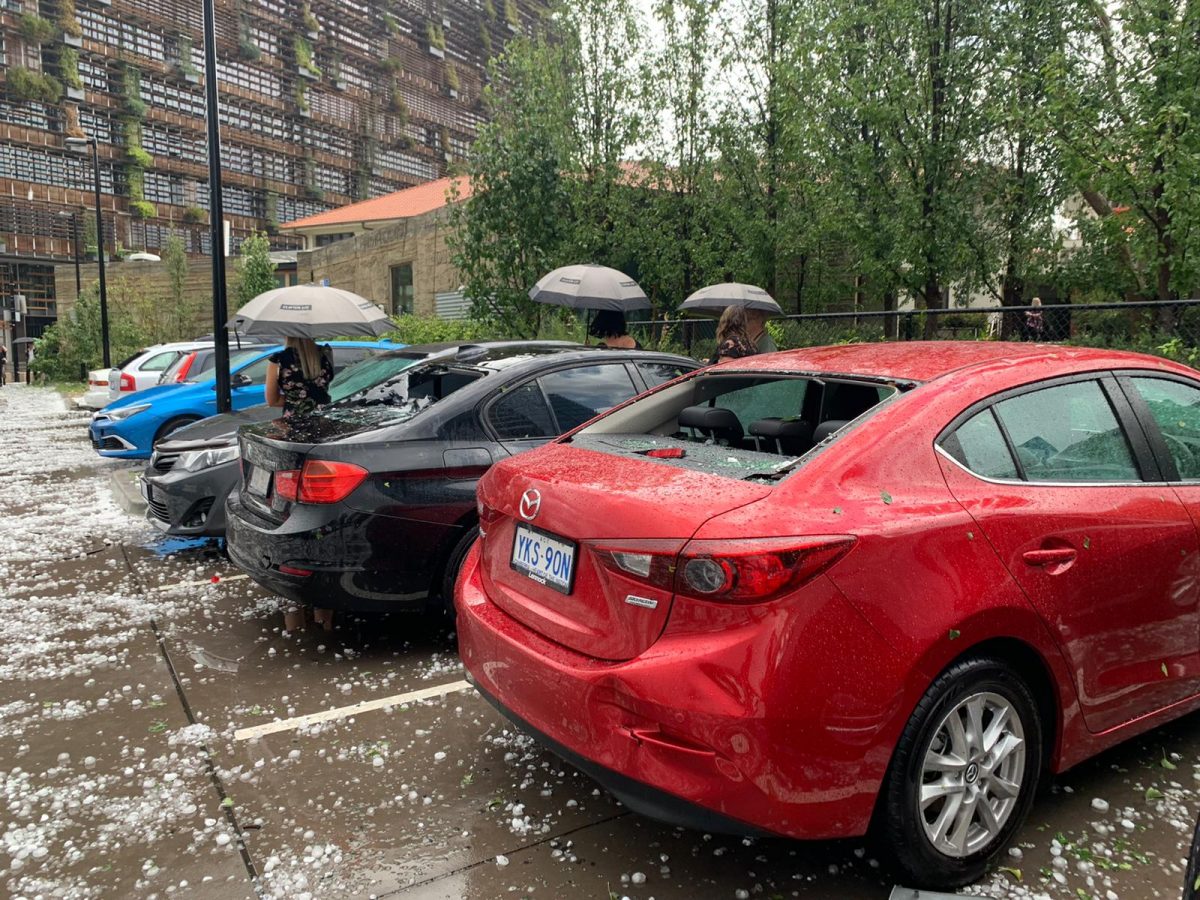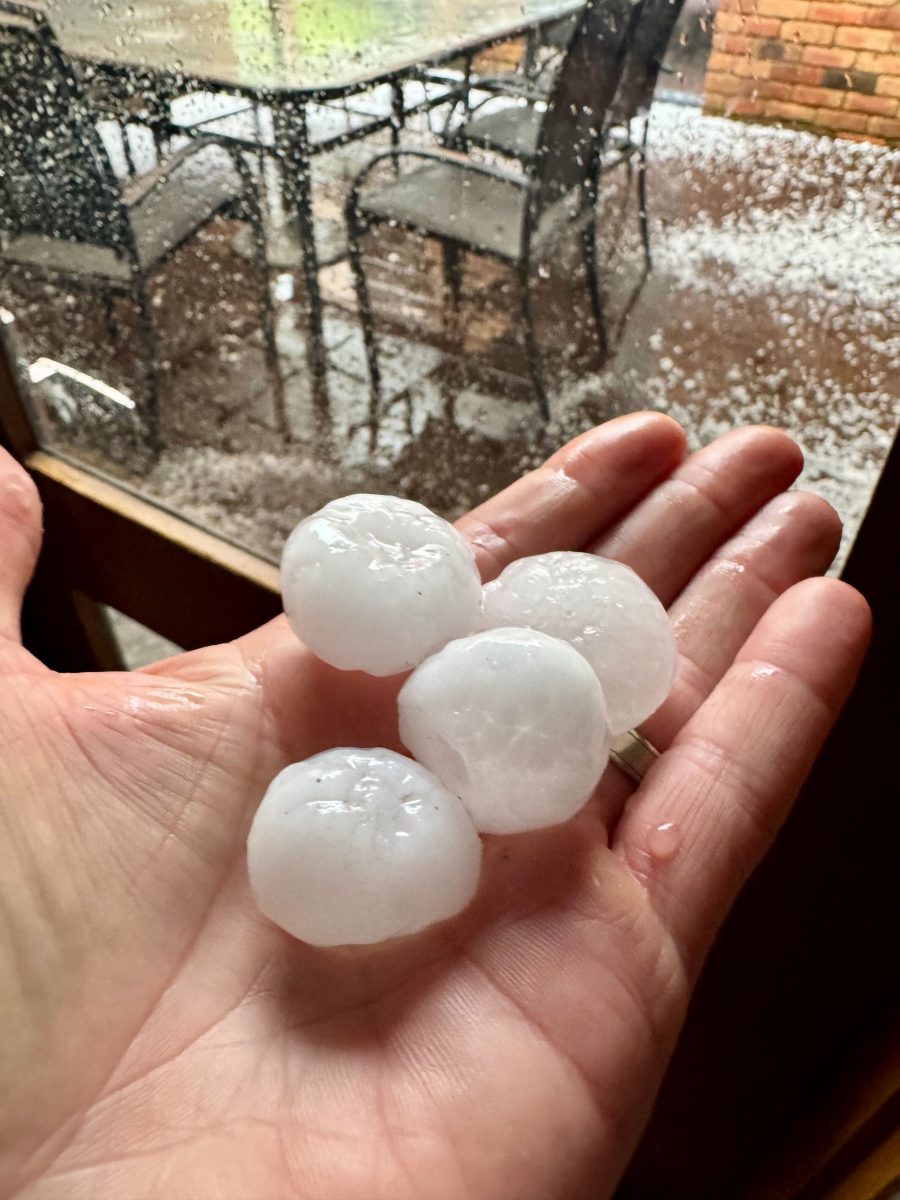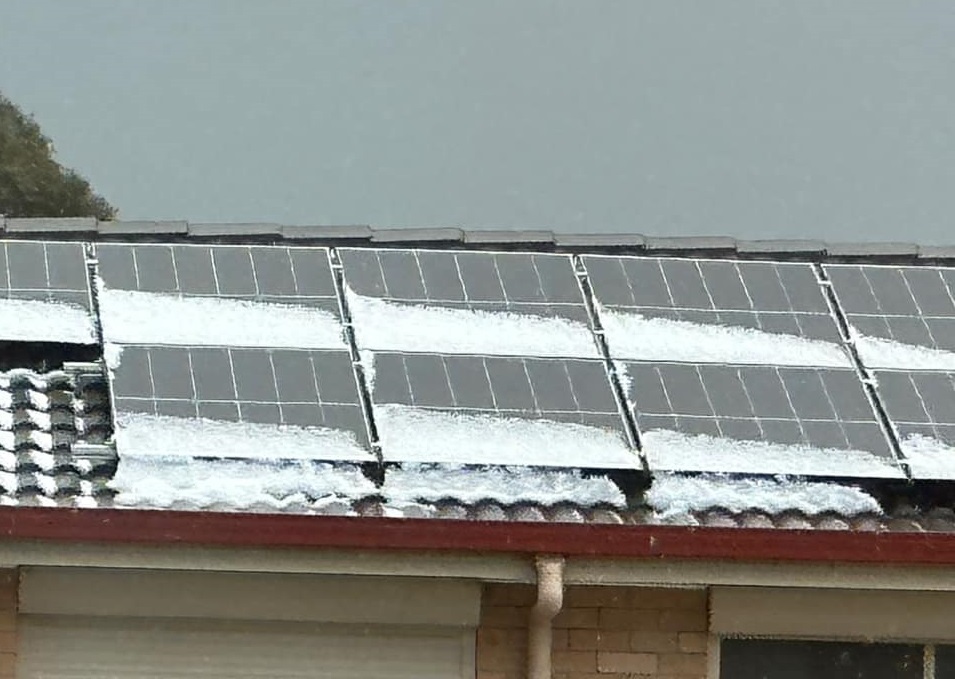
Hail damage at New Acton following the storm on 20 January, 2020. Photo: Region Media.
Bad news for Canberrans who might be onto their third car in as many years due to a recent glut of hailstorms – more are coming, and with bigger hailstones!
A new study has found hailstorms in Canberra – along with Sydney, Melbourne and Perth – could become “more damaging” as the climate warms.
Researchers at UNSW Sydney looked at how hailstones changed in size due to different average global temperatures and found definite “increases in hail size produced by the model around Sydney, Canberra, Melbourne and Perth”.
“For example, in past simulations, very large, 10 cm hailstones were expected once every 20 years around Melbourne. But in a warmer future, it’s once every three years,” lead researcher Dr Tim Raupach says.
“In future climate simulations, hailstones that were once expected only every 20 years could show up every three years.”
Canberra is no stranger to horrific hailstorms – most will remember 2020 when chunks of ice between golf and tennis ball size cut a swathe through the city, smashing windows on more than 44,500 cars, prompting more than 39,000 home insurance claims, and even leaving the copper roof of the Shine Dome peppered with dents.
At the same time, Sydney copped 5 cm hail and destructive winds while Melbourne was whacked with 5.5 cm hail.
Currently, the risk of Sydney or Canberra receiving hail more than 100 millimetres in size stands at once every three years, on average – but the study suggests this could rise to once every two years by 2080.
This potential is worked out on a global warming of about 2.8 degrees Celsius above pre-industrial levels between 2080 and 2100, which the researchers say is within the range of projections based on our current emissions pathway.

Hail from a Canberra storm in February 2025. Photo: Supplied.
Hailstones rely on warmth to start forming – hence why they usually occur in the spring and summer month when warm air from the land or ocean is pushed up into cooler air and rises into the atmosphere.
With every degree the atmosphere warms, it can also hold seven per cent more moisture.
“Hailstone size is controlled by how strong the updraft is in a thunderstorm,” Dr Raupach explains.
In a thunderstorm, strong winds – updrafts – carry moisture high up into the atmosphere, where it freezes. These ice particles, known as ‘hail embryos’, pick up supercooled water as they circulate through the storm cloud.
“The stronger the updraft, the longer a hailstone can stay in the storm and grow.”
Insurance companies have long tracked hail risk and Dr Raupach works directly with the industry to help it understand current and future hazards.
He suggests it’s likely premiums will rise in the affected cities, unless we can “reduce emissions to mitigate the worst impacts of climate change”.
But researchers also have a word of warning for what more aggressive hailstorms mean for Australia’s energy security as the grid leans more and more on solar panels.
“Hail can damage solar panels. We’ve seen it happen – in Brisbane in 2020 and in the US as well,” Dr Raupach says.

Solar panels are sitting ducks for hailstones. Photo: Renee Moss.
He says this shouldn’t deter more investment in renewables, but should be factored in a broader, smarter approach to designing cities – a research question he and colleagues are still working on.
“It’s very early days, but maybe one day we could design cities with a reduced storm risk. We should also think about how to strengthen our cities to resist hail damage.”
For now, it’s the usual advice.
“To be protected from hail you can move undercover, move your car undercover, have good insurance and have strong roof tiles,” Dr Raupach says.












